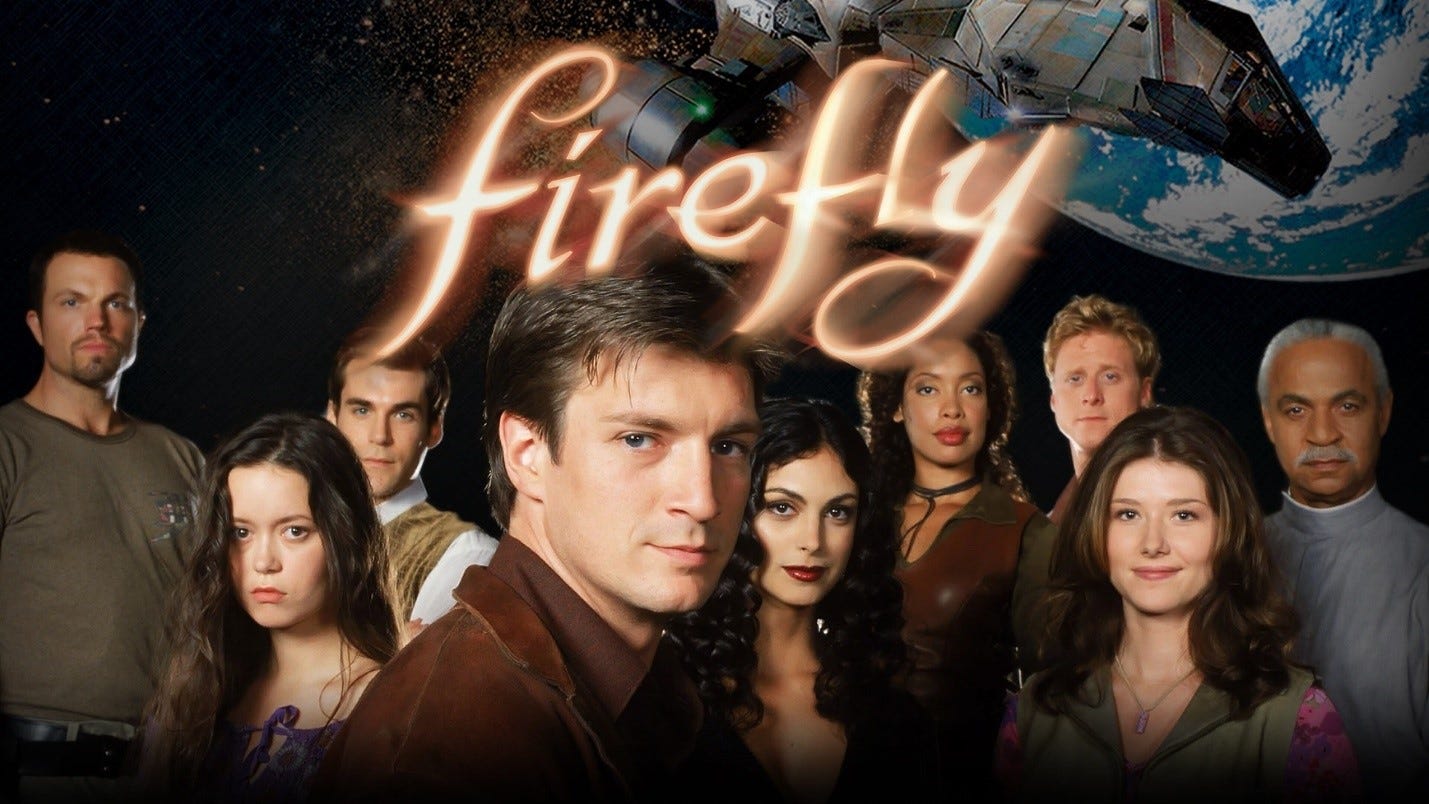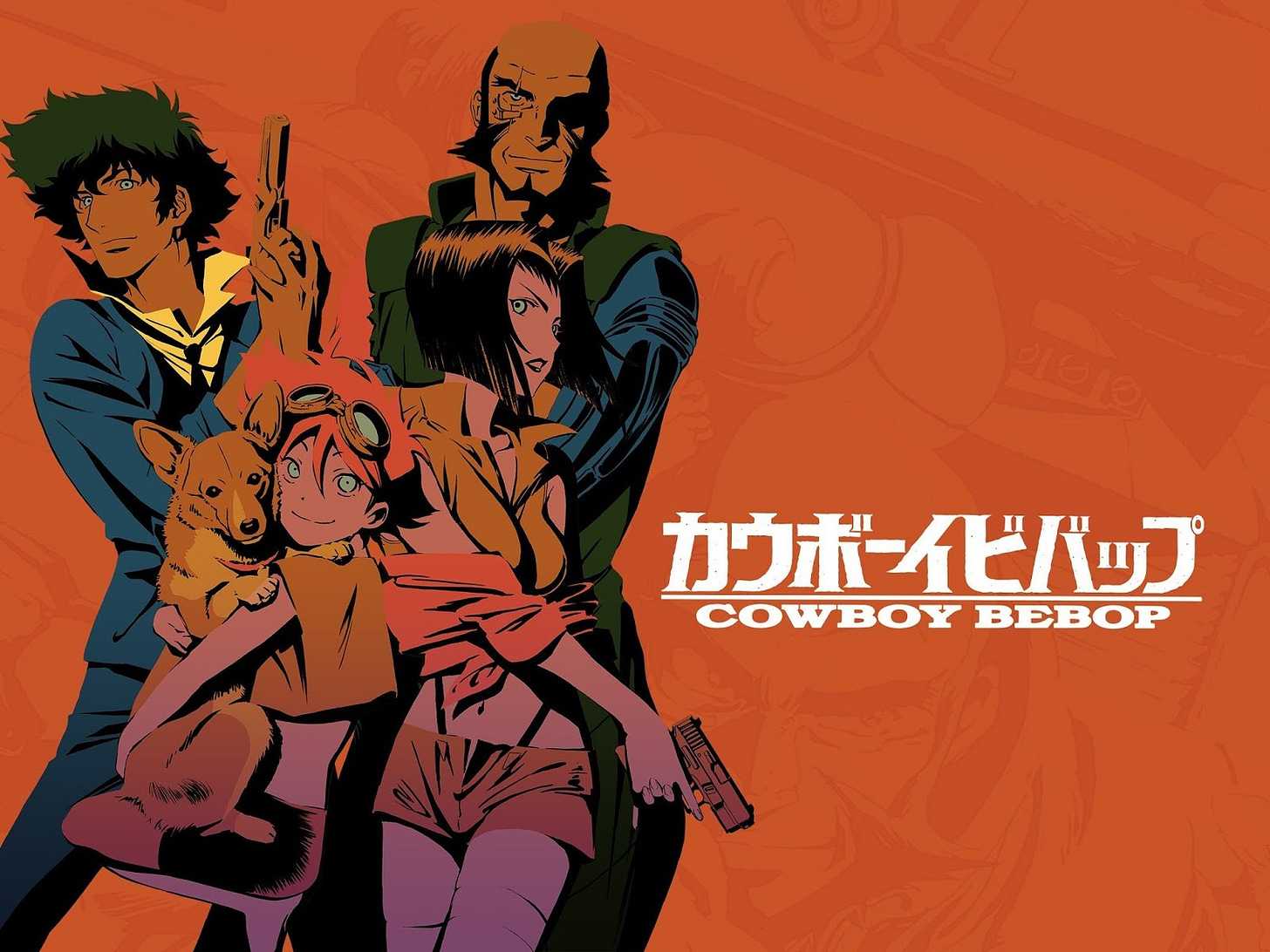The Shattered Stars is an episodic series of science fiction novellas heavily influenced by retro science fiction TV shows. The whole goal of the series is to take the surprise, variety and fun of an episodic show and translate it into a series of separate stories that are also connected into a much larger whole.
KE Wolfe is actually two writers—Kyle Muntz, and e rathke. But one of the reasons we’re able to work together so well is we have very similar influences and, over the years, have enjoyed a lot of the same series. Often we’ve watched, discussed, or even rewatched these shows years apart, and it’s been a blast to borrow and recombine elements of all of them to create something new with The Shattered Stars.
1: Star Trek: The Next Generation
The entire Star Trek series would be applicable here, but The Next Generation has been our main touchstone for The Shattered Stars. Both of us are huge fans of the series, and The Shattered Stars is quite liberal about borrowing ideas and character archetypes from The Next Generation. They’re both episodic series about the crew of a spaceship visiting strange new worlds and dealing with all the surprising things they encounter there, and one will definitely remind you of the other.
However, The Shattered Stars isn’t just an homage. As much as we love TNG, it’s also difficult to deny that, looking back, there are certain things that (at least for us) show some room for expansion. We loved those familiar characters as children, but the adults we are today see a lot of places they might develop. From a modern perspective, that shiny universe where humans are always right just seems somehow…comforting, but also a bit unsatisfying. Sometimes things were just a bit too easy for the Enterprise—but for the Burning Apollo, exploring space is hard, and that’s something we think no Star Trek series really offers.
With this in mind, we view The Shattered Stars more as an expansion of certain ideas in Star Trek than a tribute to them. The series might even be a critique, as in many ways it’s the exact opposite of TNG.
2: Firefly
Firefly is the other series we’ve mentioned most in our promotional materials. Unlike TNG, we didn’t start specifically meaning to incorporate any influence from Firefly, but the further the series went, the more we realized the two series just feel like each other. From moment to moment, the texture of The Shattered Stars is actually more similar to Firefly than it is TNG, with a heavy focus on comedy, the scrappy characters and world, and a kinetic, propulsive approach to storytelling which is quite different from the more stately, old-fashioned storytelling in TNG. This approach was really consolidated when one of us rewatched the series and came back feeling, indeed, that from moment to moment, Firefly is about as good as this kind of SF can possibly feel—character driven, fun, with a huge variety between episodes and a great approach to constructing larger arcs.
That said, the influence from Firefly has continued to grow as the series progressed. Increasingly, we’ve realized the universe in The Shattered Stars is more like Firefly than TNG. But there are other, more radical surprises that we don’t want to reveal here, which surprisingly and organically worked themselves into the series. You’ll have to check it out to see what they are, but we think fans will like them!
3: The Expanse
The Expanse is an unavoidable influence for The Shattered Stars, and not just because, like ours, the original series was written by two authors working together. The Expanse is one of the quintessential modern space operas, setting a standard for how to include complex themes and characters in a piece of modern SF. This is a standard we’ve done our best to meet in The Shattered Stars. That said, we’ve also occasionally found this series loses focus occasionally, or that some seasons are weaker than others. Sometimes it’s working with cookie cutter villains or characters who feel pushed along by the plot rather than essential to it, and we’ve also done our best to learn our lessons from it and attempt (with a bit of hubris) to make something a bit more immediately rewarding for the reader.
4: Cowboy Bebop
Cowboy Bebop is another of the great episodic SF series, with great action, comedy, and an amazing variety between episodes. Both of us watched this series as small children and it’s embedded itself deep in our conscience artistically, and while the moment to moment feel is different, Cowboy Bebop has a lot of the main effects we’re striving for. It’s the definition of great TV, a series that is simultaneously seriously while also being a lot of fun, and we think fans of Cowboy Bebop would also enjoy The Shattered Stars.
5: Neon Genesis Evangelion
This is probably the most surprising choice. What, exactly, does an arcane, hyper-serious, metaphysical Japanese anime series about giant robots—which fluctuates between extreme depression, ultraviolence, and surreal imagery—have to do with a series like The Shattered Stars, which is mostly just supposed to be fun? This time the connections really are more distant. But again, both of us watched Evangelion as teenagers and the intensity of its influence goes deep. In particular, there’s a subtle strain of body horror and cosmic mystery that has run through both of our work since the beginning. Eddy and I have been friends trading work for about a decade now, and all of that work, somehow, has elements that we’ve self-consciously attribute to Evangelion. The influence is always there, even if it’s hidden.
In this case, though, as the Shattered Stars gone, many of the larger mysteries will come to echo Evangelion in surprising ways. It will take a long time to get there, but our plans for the series (as well as some unwritten material that hasn’t been released yet) will incorporate elements of body horror and cosmic mystery that remind us a lot of Evangelion.
Read the first three chapter of Sleeping Giants.
Check out the Pay What You Want offer for paying subscriptions.
Some free books for your trouble:









Oh, all of these are great! The older I get the more comfortable I am leaning into the influences of my youth, I find. There is so much gold there to mine!
I don't have much to add on your book so I will share with you two my embryonic and deeply idiosyncratic hot take: firefly is TV sci-fi's Neuromancer.